Merkenrecht. We beperken ons tot een wekelijks overzicht van de (voortgezette oppositie)beslissingen van het Gerecht EU. Ditmaal over:
A) Verwarringsgevaar van woordmerk 'BELLRAM' en oudere beeldmerk 'RAM'
B) Verwarringsgevaar met een instantie van de Unie
C) Bij algehele vergelijking ontstaat risico tot verwarring
D) Het woordmerk 'ecoDoor' heeft een beschrijvend karakter
E) STEAMGLIDE beschrijvend voor de betreffende waar
F) Niet voldaan aan normaal gebruik
G) PREMIUM XL en L geen onderscheidend vermogen
H) 3D-beeldmerk voor een vibrator is niet onderscheidend van de norm en het woordelement kan het gebrek aan onderscheidend vermogen van het driedimensionale element niet compenseren.
Gerecht EU 15 januari 2013, zaak T-237/11 (Lidl Stiftung / OHMI - Lactimilk; BELLRAM)
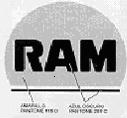
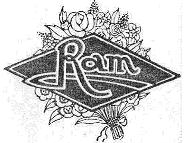 A) Gemeenschapsmerk – Beroep door de aanvrager van het woordmerk „BELLRAM” voor waren van klasse 29 ingesteld en strekkende tot vernietiging van beslissing R 1154/2009-4 van de vierde kamer van beroep van het Bureau voor harmonisatie binnen de interne markt (BHIM) van 1 maart 2011 houdende verwerping van het beroep tegen de weigering van de oppositieafdeling om dat merk in te schrijven in het kader van de oppositie ingesteld door de houder van de Spaanse woord- en beeldmerken met het woordelement „RAM” [red. beiden hier afgebeeld] voor waren van klasse 29.
A) Gemeenschapsmerk – Beroep door de aanvrager van het woordmerk „BELLRAM” voor waren van klasse 29 ingesteld en strekkende tot vernietiging van beslissing R 1154/2009-4 van de vierde kamer van beroep van het Bureau voor harmonisatie binnen de interne markt (BHIM) van 1 maart 2011 houdende verwerping van het beroep tegen de weigering van de oppositieafdeling om dat merk in te schrijven in het kader van de oppositie ingesteld door de houder van de Spaanse woord- en beeldmerken met het woordelement „RAM” [red. beiden hier afgebeeld] voor waren van klasse 29.
Het beroep wordt verworpen. Aangezien in casu het relevante publiek in beide gevallen bestaat uit de gemiddelde eindverbruiker, de waren in hoge mate soortgelijk zijn en de aan de orde zijnde tekens overeenstemmen, moet worden vastgesteld dat er gevaar voor verwarring tussen de aan de orde zijnde merken bestaat. Ook op Class46-blog.
103. De kamer van beroep heeft om te beginnen in de punten 37 tot en met 39 van de bestreden beslissing opgemerkt dat het oudere woordmerk, gelet op het door interveniënte geleverde bewijs dat het merk intensief was gebruikt, over een groter onderscheidend vermogen beschikte. Vervolgens heeft zij in punt 40 van de bestreden beslissing geoordeeld dat er rekening houdend met het grote onderscheidend vermogen van het oudere woordmerk, met de visuele en fonetische overeenstemming tussen de tekens en met de hoge soortgelijkheid van de waren sprake was van verwarringsgevaar. Tot slot heeft zij in punt 40 van de bestreden beslissing gepreciseerd dat zelfs indien het oudere woordmerk slechts een gemiddeld onderscheidend vermogen had, er gevaar voor verwarring tussen de aan de orde zijnde tekens zou bestaan.
105. Aangezien in casu het relevante publiek bestaat uit de gemiddelde eindverbruiker (zie punt 84 hierboven), de aan de orde zijnde waren in hoge mate soortgelijk zijn (zie punt 90 hierboven) en de aan de orde zijnde tekens overeenstemmen (zie punt 102 hierboven), moet worden vastgesteld dat, zoals de kamer van beroep in punt 40 van de bestreden beslissing heeft opgemerkt, er gevaar voor verwarring tussen de aan de orde zijnde merken bestaat, ongeacht of het oudere woordmerk al dan niet een groot of zwak onderscheidend vermogen heeft.
Gerecht EU 15 januari 2013, zaak T-413/11 (Welte-Wenu / OHMI - Commission; EUROPEAN DRIVESHAFT SERVICES)
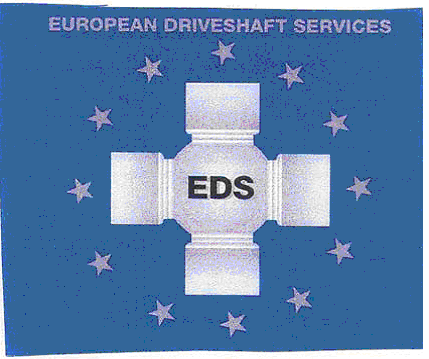
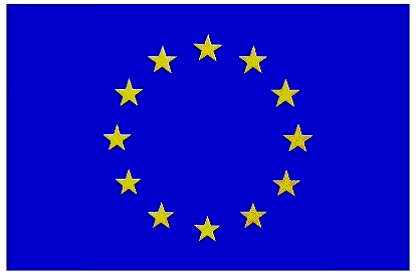 B) Gemeenschapsmerk –Beroep ingesteld door de houder van het gemeenschapsbeeldmerk bestaande in de afbeelding van een cirkel van 12 sterren tegen een blauwe achtergrond voor waren van de klassen 7 en 12 en strekkende tot vernietiging van beslissing R 1590/20101 van de eerste kamer van beroep van het Bureau voor harmonisatie binnen de interne markt (BHIM) van 12 mei 2011 houdende toewijzing van de vordering tot nietigverklaring van dat merk, ingesteld door de Europese Unie, vertegenwoordigd door de Commissie.
B) Gemeenschapsmerk –Beroep ingesteld door de houder van het gemeenschapsbeeldmerk bestaande in de afbeelding van een cirkel van 12 sterren tegen een blauwe achtergrond voor waren van de klassen 7 en 12 en strekkende tot vernietiging van beslissing R 1590/20101 van de eerste kamer van beroep van het Bureau voor harmonisatie binnen de interne markt (BHIM) van 12 mei 2011 houdende toewijzing van de vordering tot nietigverklaring van dat merk, ingesteld door de Europese Unie, vertegenwoordigd door de Commissie.
Het beroep wordt verworpen en de kostenveroordeling van de Kamer van beroep van het OHIM wordt opgeheven. Het relevante publiek zal een verband leggen tussen de aanvrager en de instellingen, organen en agentschappen van de Unie, die van de Europese vlag gebruik maken. Voornamelijk het woord "services", die als een verwijzing naar vergunningverlening, kwaliteitscontrole en service onder de garantie van een officiële instantie van de Unie ten aanzien van de waren in kwestie zou tot verwarring kunnen leiden. Het woord "Europees", dat deel uitmaakt van de naam van een aantal organen of instanties van de Unie, vergroot deze kans op verwarring. Ook op MARQUES.
64. Diesen Erwägungen der Beschwerdekammer ist beizupflichten. Denn weder die Existenz der beiden Wortbestandteile der in Rede stehenden Marke noch die in der Mitte dieser Marke befindliche Abbildung eines Gelenkkreuzes können ausschließen, dass die angesprochenen Verkehrskreise eine Verbindung zwischen der Klägerin und den von der fraglichen Marke erfassten Waren einerseits und den Organen, Einrichtungen oder sonstigen Stellen der Union oder einer anderen internationalen zwischenstaatlichen Organisation, die die Europaflagge verwendet, andererseits herstellen. Die Abbildung des Gelenkkreuzes wird vom Publikum zweifellos als unmittelbarer Hinweis auf die von der fraglichen Marke erfassten Waren wahrgenommen. Die Wortbestandteile sind geeignet, die Wahrscheinlichkeit, dass das Publikum eine Verbindung zwischen den in Rede stehenden Waren und der Union herstellt, zu erhöhen. Dies gilt insbesondere für das Wort „Services“, das – auch unter Berücksichtigung dessen, dass die in Rede stehende Marke nur Waren erfasst – als Bezugnahme auf Genehmigungs-, Qualitätskontroll- oder Garantieleistungen einer offiziellen Agentur der Union hinsichtlich der von der fraglichen Marke erfassten Waren wahrgenommen werden könnte. Das Wort „European“, das Teil der Bezeichnung mehrerer Organe, Einrichtungen oder sonstigen Stellen der Union ist, ist ebenfalls geeignet, diese Wahrscheinlichkeit zu erhöhen.
67. Im vorliegenden Fall ist die Zusammensetzung der Fachkreise, die von den von der fraglichen Marke erfassten Waren angesprochen werden, sehr vielfältig, da sie sowohl Fachleute des Fahrzeugbaus als auch die in einer Kfz-Werkstatt arbeitenden Techniker und anderen Personen umfassen. Während hinsichtlich der Personen der ersten Kategorie vernünftigerweise davon ausgegangen werden kann, dass sie relativ gut über die Einrichtungen oder sonstigen Stellen der Union, die in ihrem Tätigkeitsbereich aktiv sind, sowie über die dort verwendeten Qualitätsnormen und -zeichen informiert und sich infolgedessen der Tatsache bewusst sein werden, dass es sich bei der in Rede stehenden Marke weder um das Emblem einer speziellen Einrichtung der Union noch um ein von dieser verwendetes Prüfzeichen handelt, gilt dies nicht für die Personen der zweiten Kategorie. Letztere sind, wie die Angehörigen der breiten Öffentlichkeit, im Allgemeinen nicht ebenso gut informiert und können daher infolge des Vorhandenseins einer Nachahmung der Europaflagge in der fraglichen Marke hinsichtlich des Bestehens einer Verbindung zwischen der Klägerin und ihren von der genannten Marke erfassten Waren einerseits und der Union andererseits irregeführt werden.
Gerecht EU 15 januari 2013, zaak T-451/11 (Gigabyte Technology / OHMI - Haskins; Gigabyte)
 C) Gemeenschapsmerk – Beroep door de aanvrager van het woordmerk „Gigabyte” voor waren en diensten van de klassen 9, 35, 37 en 42 ingesteld en strekkende tot vernietiging van beslissing R 2047/20102 van de tweede kamer van beroep van het Bureau voor harmonisatie binnen de interne markt (BHIM) van 20 mei 2011 houdende verwerping van het beroep tegen de gedeeltelijke weigering van de oppositieafdeling om dit merk in te schrijven in het kader van de oppositie die door de houder van het gemeenschapswoordmerk „GIGABITER” voor diensten van de klassen 39, 40 en 42 is ingesteld.
C) Gemeenschapsmerk – Beroep door de aanvrager van het woordmerk „Gigabyte” voor waren en diensten van de klassen 9, 35, 37 en 42 ingesteld en strekkende tot vernietiging van beslissing R 2047/20102 van de tweede kamer van beroep van het Bureau voor harmonisatie binnen de interne markt (BHIM) van 20 mei 2011 houdende verwerping van het beroep tegen de gedeeltelijke weigering van de oppositieafdeling om dit merk in te schrijven in het kader van de oppositie die door de houder van het gemeenschapswoordmerk „GIGABITER” voor diensten van de klassen 39, 40 en 42 is ingesteld.
De hogere voorziening wordt afgewezen. De betrokken tekens hebben een visuele, fonetische en begripsmatige gelijkenis waardoor bij algehele evaluatie het risico van verwarring tussen de betrokken tekens ontstaat.
92. As has already been observed, the signs in question are visually, aurally and conceptually similar. In addition, the services covered by the marks in question are similar. In the context of a global assessment, it must therefore be held, on the basis of the case-law cited in paragraph 89 above, that there is a likelihood of confusion between the signs at issue.
93. That finding cannot be brought into question by the applicant’s argument based on the fact that it owns a number of trade marks containing the word ‘gigabyte’, including two registered Community figurative marks, which have been used on the European market since at least 1996 and which cover services identical to those at issue in the present case. According to the applicant, given that no instance of confusion has been found concerning its use of the mark containing the word ‘gigabyte’ – highly similar, if not almost identical, to the mark applied for in the present case – it is unlikely that consumers will be led mistakenly to believe that the services covered by the mark applied for have the same commercial origin as the services covered by the earlier mark.
98. Even setting aside the fact that it is supported only by evidence which has been rejected (see paragraph 19 above), that line of argument is ineffective. It follows from the considerations set out in paragraphs 91 to 96 above that the opposition was well founded, to the requisite legal standard, on the earlier trade mark and that OHIM acted correctly in allowing that opposition and in rejecting the trade mark application submitted by the applicant in respect of the services in question. The trade mark application filed by the proprietor of the earlier trade mark in the United States, evoked by the applicant in its submissions, is therefore irrelevant. The applicant’s assertions relating to the earlier trade mark having no reputation in the European Union are also ineffective, since it is not apparent from the contested decision that the Board of Appeal took any allegedly highly distinctive character of the earlier trade mark resulting from a hypothetical reputation into consideration in its global assessment of the likelihood of confusion between the marks at issue.
Gerecht EU 15 januari 2013, zaak T-625/11 (BSH / OHMI; ecoDoor)
 D) Gemeenschapsmerk – Vernietiging van beslissing R 340/20111 van de eerste kamer van beroep van het Bureau voor harmonisatie binnen de interne markt (BHIM) van 22 september 2011 houdende verwerping van het beroep tegen de weigering van de onderzoeker om het woordmerk „ecoDoor” in te schrijven voor waren van de klassen 7, 9 en 11.
D) Gemeenschapsmerk – Vernietiging van beslissing R 340/20111 van de eerste kamer van beroep van het Bureau voor harmonisatie binnen de interne markt (BHIM) van 22 september 2011 houdende verwerping van het beroep tegen de weigering van de onderzoeker om het woordmerk „ecoDoor” in te schrijven voor waren van de klassen 7, 9 en 11.
Het beroep wordt verworpen. Ter beoordeling staat de vraag of het woordmerk 'ecoDoor' beschrijvend is voor de waren waarvoor zij is ingeschreven. Het ecologisch karakter zal wegens de kwaliteiten van de deur door het relevante publiek worden opgevat als een rechtstreekse beschrijving van een wezenlijk kenmerk van de betrokken waren. Het woordmerk 'ecoDoor' heeft een beschrijvend karakter voor de ingeschreven waar.
17. Of een merk beschrijvend is, moet dus worden beoordeeld met betrekking tot de waren of diensten waarvoor inschrijving van het teken is aangevraagd, en uitgaande van de perceptie van het relevante publiek, dat bestaat uit de consumenten van deze waren of diensten [arrest Gerecht van 14 juni 2007, Europig/BHIM (EUROPIG), T-207/06, Jurispr. blz. II-1961, punt 30].
28. Zoals de kamer van beroep in punt 17 van de bestreden beslissing heeft opgemerkt, zonder dat deze vaststelling door verzoekster wordt betwist, kunnen de in punt 4 supra opgesomde waren deuren hebben. Bijgevolg kan het aangevraagde merk de ecologische kwaliteiten van de deur van de betrokken waar beschrijven.
33. Dienaangaande hoeft slechts te worden vastgesteld dat alle door verzoekster vermelde mogelijkheden verwijzen naar het feit dat de waar waarop het aangevraagde merk betrekking heeft, een ecologisch karakter heeft wegens de kwaliteiten van de deur waarvan deze waar is voorzien. Welke ook de door het relevante publiek in aanmerking genomen juiste uitlegging van het aangevraagde merk zij, dit merk zal in deze omstandigheden worden opgevat als een rechtstreekse beschrijving van een wezenlijk kenmerk van de betrokken waren.
Gerecht EU 16 januari 2013, zaak T-544/11 (Spectrum Brands (UK) / OHMI / Philips; STEAM GLIDE)
 E) Gemeenschapsmerk – Vordering tot nietigverklaring ingediend door de houder van het woordmerk „STEAM GLIDE” voor de waren van klasse 9 tegen beslissing R 1289/20101 van de eerste kamer van beroep van het Bureau voor harmonisatie binnen de interne markt (BHIM) van 14 juli 2011, waarbij de beslissing van de nietigheidsafdeling houdende verwerping van het verzoek van Koninklijke Philips Electronics NV tot nietigverklaring werd vernietigd en het betrokken merk nietig werd verklaard.
E) Gemeenschapsmerk – Vordering tot nietigverklaring ingediend door de houder van het woordmerk „STEAM GLIDE” voor de waren van klasse 9 tegen beslissing R 1289/20101 van de eerste kamer van beroep van het Bureau voor harmonisatie binnen de interne markt (BHIM) van 14 juli 2011, waarbij de beslissing van de nietigheidsafdeling houdende verwerping van het verzoek van Koninklijke Philips Electronics NV tot nietigverklaring werd vernietigd en het betrokken merk nietig werd verklaard.
Het Gerecht EU verwerpt het beroep. De term "STEAM" is rechtstreeks beschrijvend voor de waren van klasse 9. De term "GLIDE" geeft meer kwalitatieve en beschrijvende associaties. Ieder van de termen die deel uitmaken van de term "STEAM GLIDE", op zichzelf, zijn beschrijvend voor een kenmerk van de betrokken waren.
28 However, while admitting that the word ‘steam’ is directly descriptive and perhaps even banal in relation to the goods in question, the applicant submits, in the first of its complaints, that the word ‘glide’ is evocative and elicits ‘qualitative rather than descriptive associations’. It submits that the word in fact conjures up the image of the product moving as a glider does, hovering above the fabric, without touching it, whilst in reality steam irons always operate in contact with the fabric. Thus, the applicant argues, the word ‘glide’ stimulates the imagination to create a mental image of suspension and hovering which does not in fact exist.
29 That argument must be rejected. Admittedly, as the applicant maintained at the hearing, the word ‘glide’ may mean several different things depending on more or less subtle shades of meaning. However, as the Board of Appeal rightly stated in point 23 of the contested decision, ‘glide’, when it is specifically associated with the goods in issue, directly describes the movement of an iron used to press clothes. In that context, the intervener also points out, correctly, that, according to the Oxford English Dictionary, the word ‘glide’ refers to movement ‘over a surface’ and not above a surface as the applicant maintains by referring to the image of a glider. Since the smooth movement of an iron across clothes, which results from the steam, corresponds to what the consumer may expect from a product of that type, the description of that movement by the word in question thus does not ‘conjure up’ an image of hovering but is clearly descriptive of a very real characteristic of the goods in issue.
30 The conclusion must therefore be that each of the words of which the expression ‘steam glide’ is composed, taken in isolation, is descriptive of a characteristic of the goods in issue.
Gerecht EU 17 januari 2013, zaak T-355/09 (Reber / OHMI - Wedl & Hofmann; Walzer Traum)
 F) Gemeenschapsmerk – Beroep ingesteld door de houder van het nationale woordmerk „Walzertraum” voor waren van klasse 30 en strekkende tot vernietiging van beslissing R 623/2008-4 van de vierde kamer van beroep van het Bureau voor harmonisatie binnen de interne markt (BHIM) van 9 juli 2009 houdende vernietiging van de beslissing van de oppositieafdeling voor zover daarbij de inschrijving van het beeldmerk „Walzer Traum” voor waren van de klassen 21 en 30 gedeeltelijk wordt geweigerd in het kader van de door verzoekster ingestelde oppositie.
F) Gemeenschapsmerk – Beroep ingesteld door de houder van het nationale woordmerk „Walzertraum” voor waren van klasse 30 en strekkende tot vernietiging van beslissing R 623/2008-4 van de vierde kamer van beroep van het Bureau voor harmonisatie binnen de interne markt (BHIM) van 9 juli 2009 houdende vernietiging van de beslissing van de oppositieafdeling voor zover daarbij de inschrijving van het beeldmerk „Walzer Traum” voor waren van de klassen 21 en 30 gedeeltelijk wordt geweigerd in het kader van de door verzoekster ingestelde oppositie.
Het beroep wordt verworpen. Rekening houdend met het volume van de verkoop van het product beschermd door het oudere merk, de aard en de kenmerken van het product, de geografische omvang van het gebruik van het merk, de gevoerde reclame op haar website en de continuïteit van het gebruik van het oudere merk, ia aan normaal gebruik in relatie tot de aard en het belang niet voldaan.
49. Nach alledem ist die Beschwerdekammer zu Recht zu dem Ergebnis gelangt, dass die Klägerin zwar eine gewisse Kontinuität der Benutzung der älteren Marke nachgewiesen habe, sich diese Benutzung aber in örtlichen und mengenmäßigen Grenzen gehalten habe, die als eng und lokal zu qualifizieren seien, so dass sie mit Blick auf ihre Art und ihren Umfang nicht als ernsthafte Benutzung angesehen werden könne. Die Beschwerdekammer hat nämlich in Übereinstimmung mit der oben in Randnr. 29 angeführten Rechtsprechung eine umfassende Beurteilung vorgenommen, indem sie das Verkaufsvolumen der durch die ältere Marke geschützten Ware, die Art und Merkmale der Ware, die geografische Verbreitung der Benutzung der Marke, die Werbung auf der Internetseite der Klägerin sowie die Kontinuität der Benutzung der älteren Marke berücksichtigt und dabei die berücksichtigten Faktoren in gewissem Maße zueinander in Beziehung gesetzt hat.
Gerecht EU 17 januari 2013, gevoegde zaken T-582/11 en T-583-11 (Solar-Fabrik / OHMI; Premium XL)
 G) Gemeenschapsmerk – Vernietiging van beslissing R 245/20111 en R 246/20114 van de eerste kamer van beroep van het Bureau voor harmonisatie binnen de interne markt (BHIM) van 1 september 2011, waarbij is verworpen het beroep tegen de beslissing van de onderzoeker houdende weigering van inschrijving van de woordmerken „Premium XL” / "Premium L", voor waren van de klassen 9 en 11.
G) Gemeenschapsmerk – Vernietiging van beslissing R 245/20111 en R 246/20114 van de eerste kamer van beroep van het Bureau voor harmonisatie binnen de interne markt (BHIM) van 1 september 2011, waarbij is verworpen het beroep tegen de beslissing van de onderzoeker houdende weigering van inschrijving van de woordmerken „Premium XL” / "Premium L", voor waren van de klassen 9 en 11.
Het beroep wordt verworpen, omdat Premium XL en Premium L in alledaagse taal, zoals in de handel, als een generieke term wordt gebruikt. Premium XL en Premium L kunnen niet in staat zijn om de commerciële herkomst van de producten die zij aanwijzen, en de wezenlijke functie van het merk, te vervullen. Bij Premium XL en L kan de consument geen voostelling maken aan wat voor soort product ze verwant zijn. Daarom kunnen Premium XL en Premium L niet worden beschouwd als onderscheidend. Ook op MARQUES-blog
27. Die Zeichen Premium XL und Premium L vermitteln zwar dem Verbraucher infolge ihrer generischen Bedeutung, die darauf abzielt, auf unbestimmte Weise die Art, die Funktion, die Qualität oder eine der Eigenschaften einer beliebigen Ware zu preisen, keine Vorstellung von der Art der mit den Zeichen gekennzeichneten Ware, doch können diese Wortzeichen, gerade weil sie im alltäglichen Sprachgebrauch wie auch im Verkehr allgemein als generische lobende Begriffe verwendet werden, nicht als geeignet angesehen werden, auf die betriebliche Herkunft der mit den Zeichen gekennzeichneten Waren hinzuweisen und damit die wesentliche Funktion der Marke zu erfüllen (vgl. in diesem Sinne Urteile vom 13. Juli 2005, Sunrider/HABM [TOP], T-242/02, Slg. 2005, II-2793, Randnr. 95, und vom 20. Januar 2009, Pioneer Hi-Bred International/HABM [OPTIMUM], T-424/07, nicht in der amtlichen Sammlung veröffentlicht, Randnr. 26). Somit können die Zeichen Premium XL und Premium L nicht als unterscheidungskräftig angesehen werden.
Gerecht EU 18 januari 2013, zaak T-137/12 (FunFactory / OHMI; Vibrateur)
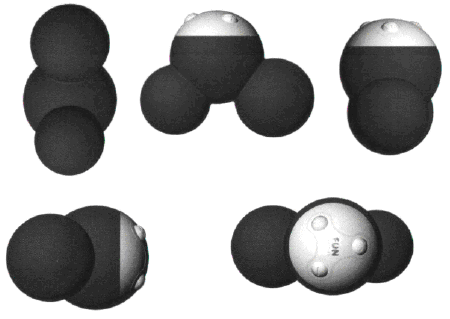 H) Gemeenschapsmerk – Vernietiging van beslissing R 1436/20114 van de vierde kamer van beroep van het Bureau voor harmonisatie binnen de interne markt (BHIM) van 19 januari 2012, waarbij is verworpen het beroep tegen de beslissing van de onderzoeker houdende weigering van inschrijving van het driedimensionale merk in de vorm van een vibrator voor waren van klasse 10.
H) Gemeenschapsmerk – Vernietiging van beslissing R 1436/20114 van de vierde kamer van beroep van het Bureau voor harmonisatie binnen de interne markt (BHIM) van 19 januari 2012, waarbij is verworpen het beroep tegen de beslissing van de onderzoeker houdende weigering van inschrijving van het driedimensionale merk in de vorm van een vibrator voor waren van klasse 10.
Het beroep wordt verworpen. De vorm waarvoor de inschrijving is aangevraagd, wijkt niet sterk af van de norm. Het aangevraagde merk mist onderscheidend vermogen wat inherent is aan de betrokken producten. De totaalindruk van het publiek zal het beschrijvend element of zwak onderscheidend onderdeel van een samengesteld merk niet als onderscheidend en dominerende bestanddeel ervaren. Het beschrijvende karakter van het woordelement "FUN" kan niet compenseren voor het gebrek aan onderscheidend vermogen van het driedimensionale element. Ook op IPKat (Trade mark for three-balled vibrator is functional, confirms General Court).
 Gemeenschapsmodel tegenover ouder merkenrecht. Nietigheidsverklaring. Verwarringsgevaar.
Gemeenschapsmodel tegenover ouder merkenrecht. Nietigheidsverklaring. Verwarringsgevaar. Uitspraak ingezonden door Remco van Leeuwen,
Uitspraak ingezonden door Remco van Leeuwen, 
 A) Gemeenschapsmerk – Beroep door de aanvrager van het woordmerk „
A) Gemeenschapsmerk – Beroep door de aanvrager van het woordmerk „
 B) Gemeenschapsmerk –Beroep ingesteld door de houder van het gemeenschapsbeeldmerk bestaande in de afbeelding van een cirkel van 12 sterren tegen een blauwe achtergrond voor waren van de klassen 7 en 12 en strekkende tot vernietiging van beslissing R 1590/20101 van de eerste kamer van beroep van het Bureau voor harmonisatie binnen de interne markt (BHIM) van 12 mei 2011 houdende toewijzing van de vordering tot nietigverklaring van dat merk, ingesteld door de Europese Unie, vertegenwoordigd door de Commissie.
B) Gemeenschapsmerk –Beroep ingesteld door de houder van het gemeenschapsbeeldmerk bestaande in de afbeelding van een cirkel van 12 sterren tegen een blauwe achtergrond voor waren van de klassen 7 en 12 en strekkende tot vernietiging van beslissing R 1590/20101 van de eerste kamer van beroep van het Bureau voor harmonisatie binnen de interne markt (BHIM) van 12 mei 2011 houdende toewijzing van de vordering tot nietigverklaring van dat merk, ingesteld door de Europese Unie, vertegenwoordigd door de Commissie. C) Gemeenschapsmerk – Beroep door de aanvrager van het woordmerk „
C) Gemeenschapsmerk – Beroep door de aanvrager van het woordmerk „ D) Gemeenschapsmerk – Vernietiging van beslissing R 340/20111 van de eerste kamer van beroep van het Bureau voor harmonisatie binnen de interne markt (BHIM) van 22 september 2011 houdende verwerping van het beroep tegen de weigering van de onderzoeker om het woordmerk „
D) Gemeenschapsmerk – Vernietiging van beslissing R 340/20111 van de eerste kamer van beroep van het Bureau voor harmonisatie binnen de interne markt (BHIM) van 22 september 2011 houdende verwerping van het beroep tegen de weigering van de onderzoeker om het woordmerk „ E) Gemeenschapsmerk – Vordering tot nietigverklaring ingediend door de houder van het woordmerk „
E) Gemeenschapsmerk – Vordering tot nietigverklaring ingediend door de houder van het woordmerk „ G) Gemeenschapsmerk – Vernietiging van beslissing R 245/20111 en R 246/20114 van de eerste kamer van beroep van het Bureau voor harmonisatie binnen de interne markt (BHIM) van 1 september 2011, waarbij is verworpen het beroep tegen de beslissing van de onderzoeker houdende weigering van inschrijving van de woordmerken „
G) Gemeenschapsmerk – Vernietiging van beslissing R 245/20111 en R 246/20114 van de eerste kamer van beroep van het Bureau voor harmonisatie binnen de interne markt (BHIM) van 1 september 2011, waarbij is verworpen het beroep tegen de beslissing van de onderzoeker houdende weigering van inschrijving van de woordmerken „ H) Gemeenschapsmerk – Vernietiging van beslissing R 1436/20114 van de vierde kamer van beroep van het Bureau voor harmonisatie binnen de interne markt (BHIM) van 19 januari 2012, waarbij is verworpen het beroep tegen de beslissing van de onderzoeker houdende weigering van inschrijving van het driedimensionale merk in de vorm van een vibrator voor waren van klasse 10.
H) Gemeenschapsmerk – Vernietiging van beslissing R 1436/20114 van de vierde kamer van beroep van het Bureau voor harmonisatie binnen de interne markt (BHIM) van 19 januari 2012, waarbij is verworpen het beroep tegen de beslissing van de onderzoeker houdende weigering van inschrijving van het driedimensionale merk in de vorm van een vibrator voor waren van klasse 10. Als randvermelding. Reclamerecht. Inmonteren van beeldmerk, scribes.
Als randvermelding. Reclamerecht. Inmonteren van beeldmerk, scribes. Uitspraak ingezonden door Josine van den Berg en Jacqueline Schaap,
Uitspraak ingezonden door Josine van den Berg en Jacqueline Schaap,  In navolging van
In navolging van  Gemeenschapsmerkenrecht. Oppositieprocedure. Aanvrager van het internationale beeldmerk bevattende de woordbestanddelen „
Gemeenschapsmerkenrecht. Oppositieprocedure. Aanvrager van het internationale beeldmerk bevattende de woordbestanddelen „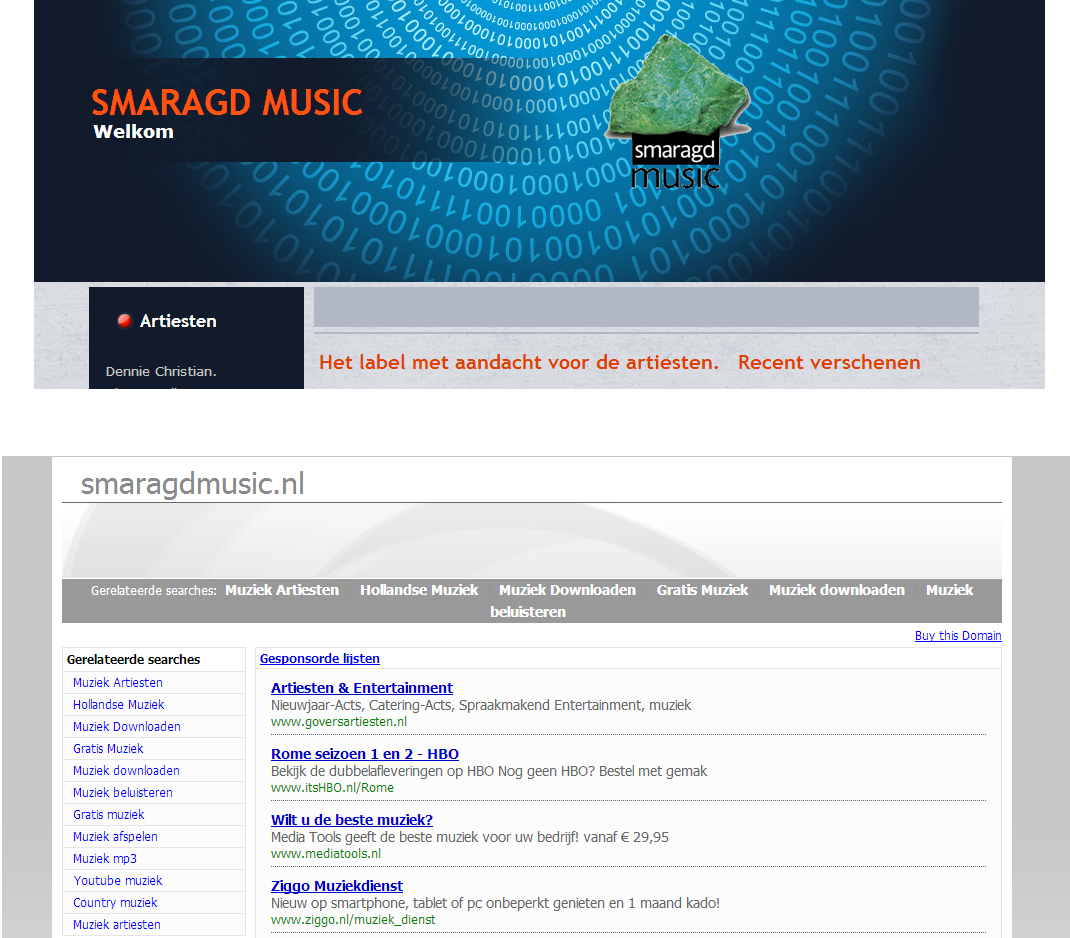 Beslissing ingezonden door Janouk Kloosterboer,
Beslissing ingezonden door Janouk Kloosterboer, 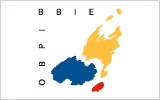 Merkenrecht. We beperken ons tot een maandelijks overzicht van de oppositiebeslissingen van het BBIE. Recentelijk heeft het BBIE een serie van 16 oppositiebeslissingen gepubliceerd die wellicht de moeite waard is om door te nemen. Zie voorgaand bericht in deze serie:
Merkenrecht. We beperken ons tot een maandelijks overzicht van de oppositiebeslissingen van het BBIE. Recentelijk heeft het BBIE een serie van 16 oppositiebeslissingen gepubliceerd die wellicht de moeite waard is om door te nemen. Zie voorgaand bericht in deze serie:  Eindvonnis na
Eindvonnis na 






















































































